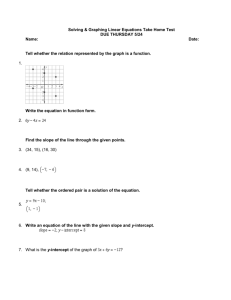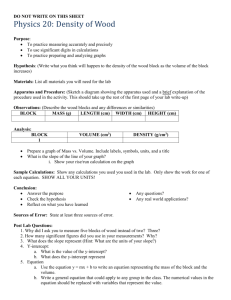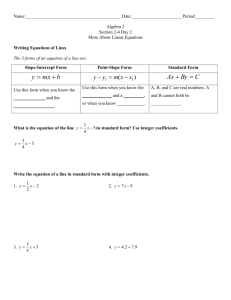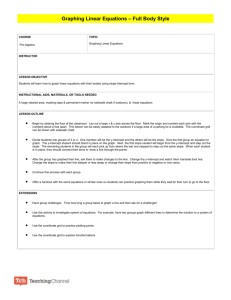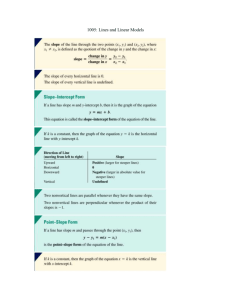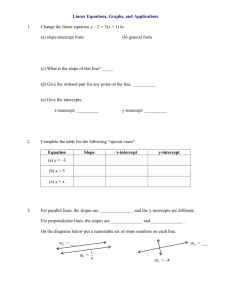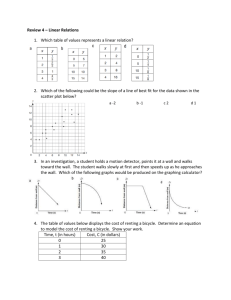IN/OUT TABLE, SLOPE, and Y-INTERCEPT PRACTICE Remember
advertisement
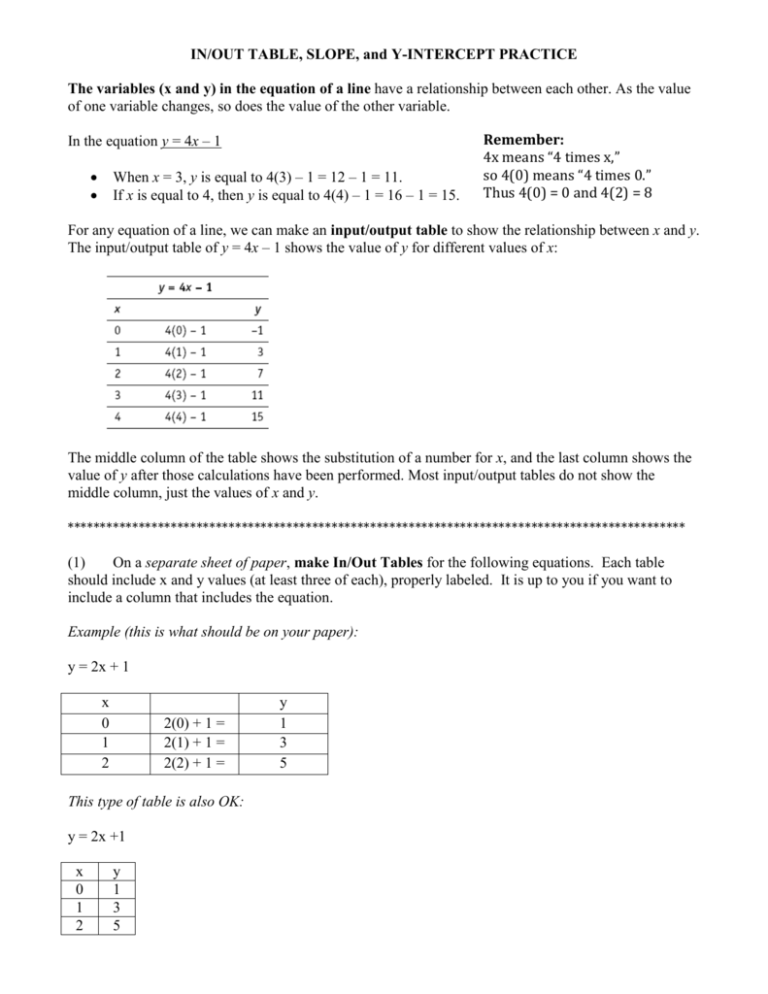
IN/OUT TABLE, SLOPE, and Y-INTERCEPT PRACTICE The variables (x and y) in the equation of a line have a relationship between each other. As the value of one variable changes, so does the value of the other variable. In the equation y = 4x – 1 When x = 3, y is equal to 4(3) – 1 = 12 – 1 = 11. If x is equal to 4, then y is equal to 4(4) – 1 = 16 – 1 = 15. Remember: 4x means “4 times x,” so 4(0) means “4 times 0.” Thus 4(0) = 0 and 4(2) = 8 For any equation of a line, we can make an input/output table to show the relationship between x and y. The input/output table of y = 4x – 1 shows the value of y for different values of x: The middle column of the table shows the substitution of a number for x, and the last column shows the value of y after those calculations have been performed. Most input/output tables do not show the middle column, just the values of x and y. ************************************************************************************************ (1) On a separate sheet of paper, make In/Out Tables for the following equations. Each table should include x and y values (at least three of each), properly labeled. It is up to you if you want to include a column that includes the equation. Example (this is what should be on your paper): y = 2x + 1 x 0 1 2 2(0) + 1 = 2(1) + 1 = 2(2) + 1 = This type of table is also OK: y = 2x +1 x 0 1 2 y 1 3 5 y 1 3 5 (2) For each equation, near each table, write the slope and y-intercept. Example (same equation as above): y = 2x + 1 Slope (m) = 2 Y-Intercept (b) = 1 Remember, SLOPE or “m” is the number “before the x” (this is called the coefficient). It does NOT include the x, but it DOES include a negative sign if there is one. Example: y = -3x + 1, the slope is -3 If there is no number before the x (no coefficient), then the SLOPE = 1. Example: y = x + 999, the slope is 1 The Y-INTERCEPT or “b” (if the equation is written in y = mx + b form) is the number at the end (it never has an x or y attached to it). It DOES include the negative sign if there is one. Example: y = 4x – 5 (this is the same as y = 4x + -5), so the y-intercept is -5 If there is no number at the end, the y-intercept is 0. Example: y = 12x, the y-intercept is 0 Equations for practice: 1. y = 5x + 2 2. y = 2 x – 3 3. y = x 4. y = -2x + 4 5. y = -x – 1 6. y = 3x + 0 7. y = -8x 8. y = 4x – 5 9. y = 10x 10. y = x – 6 Worth 40 points: 20 (2 per equation) for tables 10 (1 per equation) for slope 10 (1 per equation) for y-intercept

